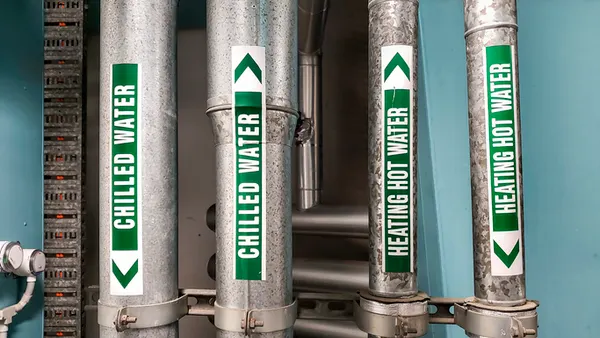Dive Brief:
- Repurposing old batteries from electric vehicles in alternative energy storage applications – like at fast-charging stations or rooftop and microgrid storage systems – is one of the ways to extend EV battery lifespans and electrify the transportation sector in a more sustainable manner, according to a new report from the Natural Resources Defense Council.
- Batteries in EVs contain minerals like lithium, nickel and cobalt that can be associated with mining processes that contaminate their surroundings and pose a health threat to communities, the report noted. Many other products also use these materials, but EVs “could serve as a catalyst to clean up the dirty mining industry’s act,” according to the report.
- One way to do this is to repurpose old EV batteries on the grid. “There’s definitely some potential in the utility sector, especially in terms of grid back-up storage … even though [old EV batteries] have lost, say, 20% of their original capacity… when you’re talking about grid storage that can still be a perfectly usable battery for several more years,” Jordan Brinn, author of the report and an advocate with NRDC, said.
Dive Insight:
“Our petroleum-based economy is very unsustainable… and electric vehicles as well as clean electricity and renewables are all part of the solution to this issue,” Brinn said.
If policy-makers and others aren’t careful, “these new technologies could potentially mimic some of the harms of those fossil fuel systems. … So we need to be making sure that we’re producing the minerals we need for EV batteries, for grid storage batteries, in the best way possible,” Brinn added.
The best way to reduce the impact of battery supply chains is to reduce the amount of materials needed for them, the report notes. This could be achieved by increasing material efficiency, as well as finding second-life applications for vehicle batteries and better recycling methods.
There are two kinds of second-life uses for EV batteries – reusing them in EVs that don’t need very high ranges, like golf carts, or repurposing them as a different energy storage application, such as storage systems for rooftop solar and microgrids, according to the report.
When a battery is recycled, 95% of the minerals in it can be reused in new batteries, whether that’s for EVs or grid storage systems, Brinn said.
The process of repurposing EV batteries to be used on the grid is still in its infancy and most of the companies working on it are in the start-up or academic laboratory stage, she added.
The process has some challenges – the report notes that “it is important to keep in mind that a battery cannot be taken out of a vehicle and put straight into a new application.” A battery would need to be assessed, and then potentially reassembled to fix issues or replace certain cells, before being given a second life.
More broadly, there are two issues that policy-makers will need to figure out before EV batteries are repurposed on the grid at scale. The first is regulation around access to battery management systems, Brinn said. Many different companies make batteries, each with their own proprietary design.
“Right now, there is not a clear set of standards for other folks beside the battery manufacturer [to be] able to access that information” about how they function, she said.
The second issue is making sure there’s a flexible liability framework in place for repurposed batteries. Some battery manufactures may want to maintain some oversight over how the batteries are used, Brinn said, while others may not.
“That can get pretty complicated, so making sure there’s some clear frameworks in place for setting up who’s responsible in these multiple stages of this new life that a EV battery might be living,” is important, she said.














